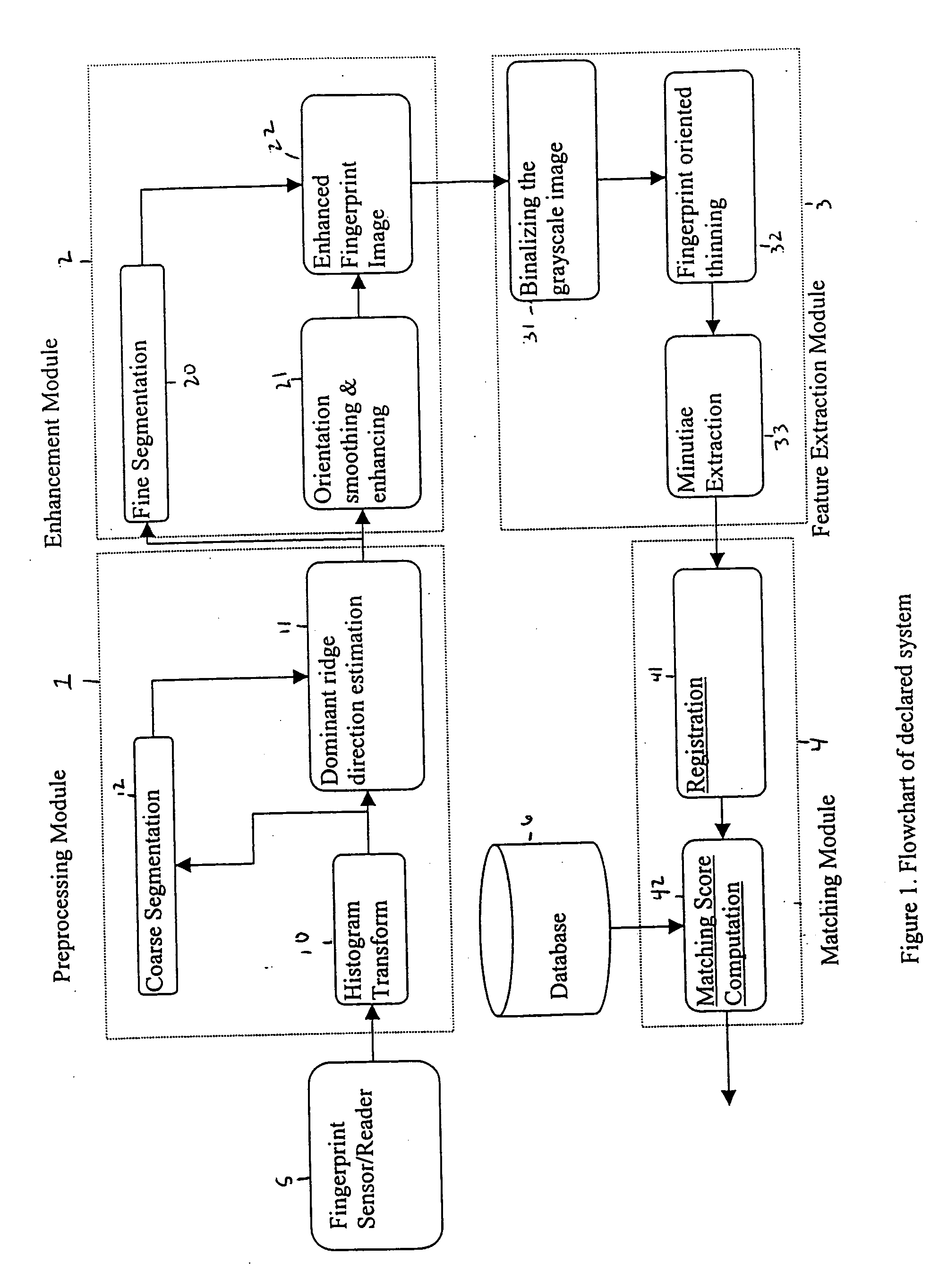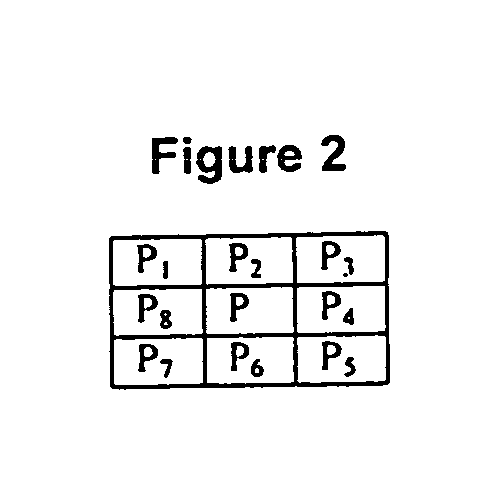Wavelet-enhanced automated fingerprint identification system
an automatic fingerprint identification and wavelet technology, applied in matching and classification, instruments, computing, etc., can solve the problems of not meeting demanding security requirements, not verifying the correctness of pin input by a person, and not authenticating the true identity of authorized persons, etc., to achieve the effect of improving the afis
- Summary
- Abstract
- Description
- Claims
- Application Information
AI Technical Summary
Problems solved by technology
Method used
Image
Examples
Embodiment Construction
[0027] The invention is a method and system for performing AFIS with various features that contribute to a significant performance improvement to two of the most important aspects of an AFIS: efficiency (fast processing), and reliability (accuracy and robustness to variations in input fingerprints). In particular, these features include a histogram pre-enhancement method, fast smoothing and enhancement method for fingerprint images, a fingerprint-oriented thinning method, a modified Hough transform for fingerprint registration, and an improved matching score computation method.
[0028] It is noted that while the specification discusses the invention in relation to fingerprints, the invention is not limited to an application for fingerprints and may also be used for other data image processing and matching such as iris, voice, hand geometry, face and palm patterns.
[0029] As illustrated in the FIG. 1, the system includes four modules: a preprocessing module 1, an enhancement module 2,...
PUM
 Login to View More
Login to View More Abstract
Description
Claims
Application Information
 Login to View More
Login to View More - R&D
- Intellectual Property
- Life Sciences
- Materials
- Tech Scout
- Unparalleled Data Quality
- Higher Quality Content
- 60% Fewer Hallucinations
Browse by: Latest US Patents, China's latest patents, Technical Efficacy Thesaurus, Application Domain, Technology Topic, Popular Technical Reports.
© 2025 PatSnap. All rights reserved.Legal|Privacy policy|Modern Slavery Act Transparency Statement|Sitemap|About US| Contact US: help@patsnap.com



